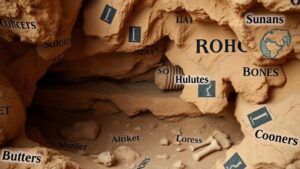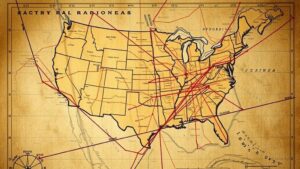The Art of Site History Research: Preparing for Exploration Success
The Art of Site History Research: Preparing for Exploration Success
Site history research is a crucial aspect of exploratory studies in archaeology, urban studies, historical preservation, and environmental analysis. It involves the systematic investigation of a sites past to gather comprehensive information that will inform future exploration efforts. With the rapid advancement of technology and data availability, the methodologies and approaches for conducting site history research have evolved significantly. This article delves into the art of site history research, detailing best practices and strategies to ensure successful exploration outcomes.
Understanding the Importance of Site History Research
Conducting thorough site history research is essential for several reasons:
- Informed Decision-Making: Accurate historical context allows researchers to make evidence-based choices about further investigations.
- Preservation Advocacy: Understanding a sites history aids in advocating for preservation efforts, ensuring that historical significance is recognized and maintained.
- Risk Mitigation: Early identification of potential disturbances or hazards related to a sites past can inform risk management strategies.
For example, the Boeing 737 MAX incidents prompted extensive historical analyses of the aircraft models design and production processes, influencing regulatory changes in the aviation industry. Similarly, understanding the historical context of a location can significantly affect urban development policies.
Key Components of Site History Research
Site history research typically encompasses several essential components, including archival research, oral histories, and environmental studies. Each component offers unique insights into understanding the sites evolution over time.
Archival Research
Archival research involves investigating historical documents, maps, photographs, and records from various institutional repositories. Key sources for archival research include:
- National Archives: Collections of government records that provide insights into public policies affecting a site.
- Local Historical Societies: These often contain unique local histories, which can enrich understanding of a site’s background.
- Libraries: University or public libraries may hold collections of regional studies, monographs, and journals that shed light on specific topics.
For example, the National Archives in Washington, D.C., houses the records of various federal agencies, which can be instrumental in researching the history of federally designated sites.
Oral Histories
Complementing written documentation, oral histories can provide firsthand accounts of a site’s significance and changes. Engaging with community members who have historical ties to the location can unearth unique narratives and perspectives. For example, interviewing long-time residents of the historic District of Columbia can reveal lesser-known details about urban development and social change that are not recorded in official documents.
Environmental Studies
Investigating the environmental history of a site involves assessing its ecological evolution, including land use changes, climate impacts, and biodiversity shifts. e studies can enhance comprehension of a site’s past conditions and forecast future scenarios. The United Nations Environment Programme highlights how understanding historical land use contributes to better urban planning and conservation efforts.
Methodological Approaches to Site History Research
Effective site history research often employs multiple methodological approaches. Some notable techniques include:
- GIS Mapping: Geographic Information Systems (GIS) allow researchers to visualize and analyze spatial data over time, enhancing comprehension of historical landscape changes.
- Excavation and Artifact Analysis: Physical excavations can uncover artifacts that provide invaluable clues about past human activity, complementing documentary research.
- Radiocarbon Dating: Used to determine the age of organic materials, this method can help establish timelines for human occupation and use of a site.
The integration of GIS in studies, for example, enables researchers to map historical boundaries of parcels in urban settings, revealing patterns of growth and gentrification, as demonstrated in studies of neighborhoods like Harlem in New York City.
Challenges in Site History Research
Despite its importance, site history research is fraught with challenges, such as:
- Data Availability: Missing or incomplete records can hinder comprehensive understanding, making it essential to identify alternative sources.
- Interpretation Bias: Researchers must be aware of their biases, as subjective interpretations can affect conclusions drawn from historical data.
- Community Engagement: Understanding and winning the trust of local communities is vital for gathering accurate oral histories, which can sometimes be overlooked or undervalued.
Conclusion and Actionable Takeaways
To wrap up, the art of site history research equips researchers with the necessary tools to engage in meaningful exploration efforts. By employing a multifaceted approach that includes archival research, oral histories, and environmental studies while navigating potential challenges, researchers can unlock rich narratives from the past. Key actionable takeaways include:
- Invest time in comprehensive archival research to establish a solid foundational context.
- Engage with the community to gather oral histories, enriching the historical narrative.
- Use technological tools like GIS to enhance spatial analysis and visualization of historical data.
By adhering to these principles, researchers will be better prepared for successful exploration outcomes, ultimately contributing to the preservation and understanding of our shared historical heritage.



